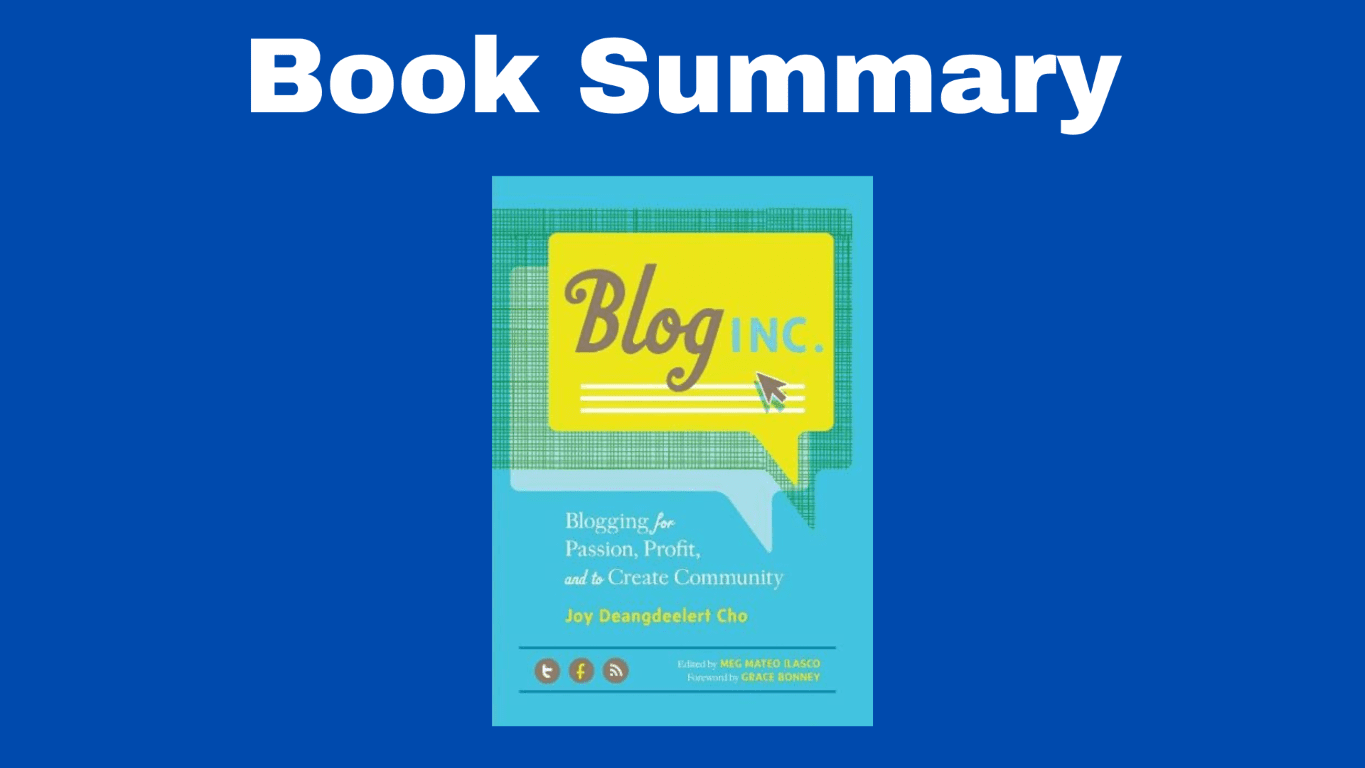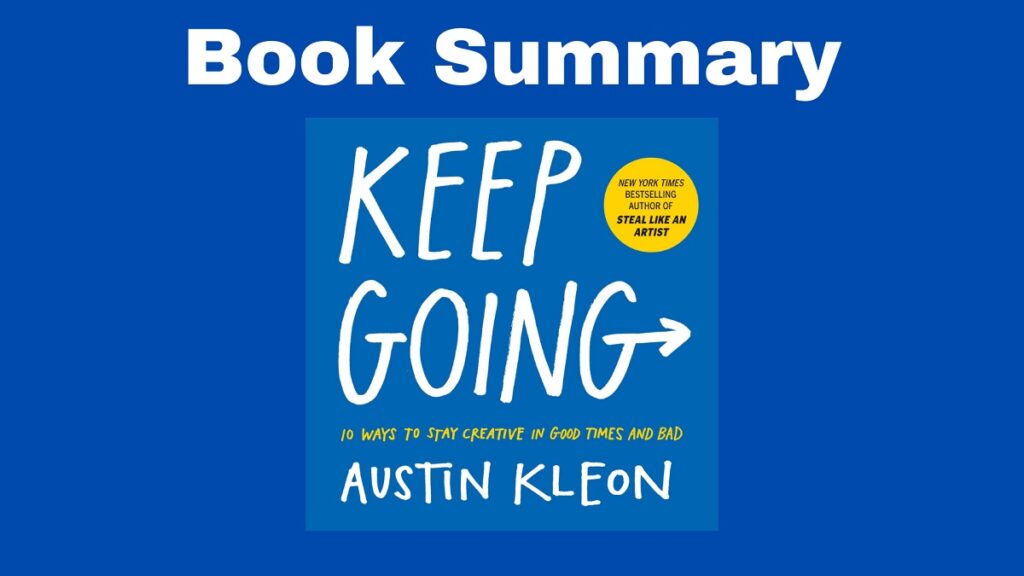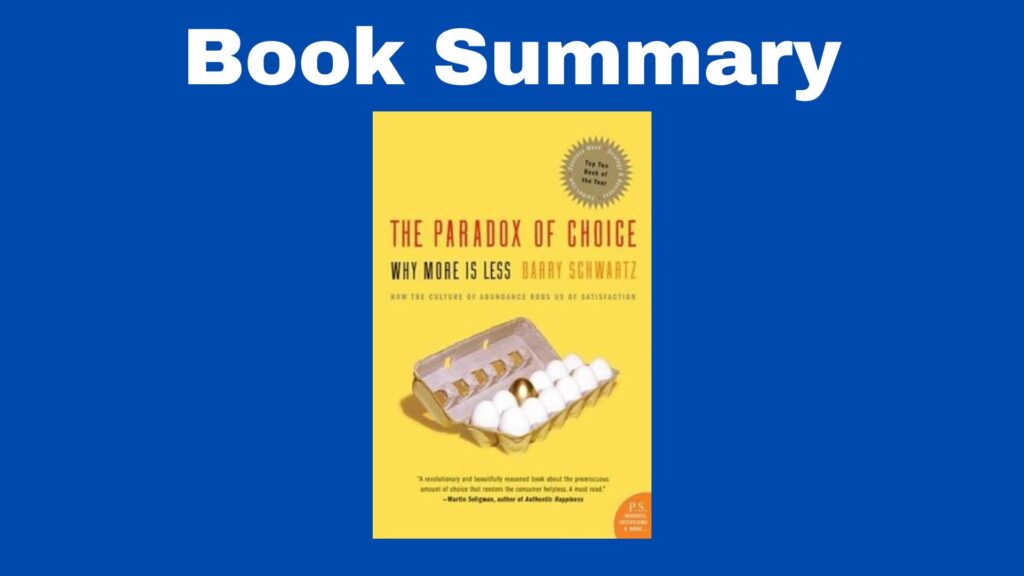The Book in Three Sentences
Written by the blogger behind Oh Joy!, this book gives you advice on starting and growing a blog. Blog, Inc. starts with an introduction to blogging and then moves on to more detailed topics such as turning your blog into a business or monetizing it. There are also several interviews with popular bloggers.
Blog, Inc.: Blogging for Passion, Profit, and to Create Community Summary
Chapter 1: Introduction to Blogging
A blog (short for weblog) is an interactive website that delivers regular content.
There are many reasons to blog, such as:
- Passion
- Community
- Marketing
- To share talents
- To generate income
There are also several kinds of blogs. Some of the most popular include:
- Personal: this is the kind of blog where you document what happens in your personal life.
- Topical: here you showcase your interests, passions, and hobbies.
- Talent: a blog can help you keep an updated portfolio of your work.
- Behind-the-scenes news: a blog can allow you to interact with customers on a more personal level.
- Community and collaboration: this is where you join forces with another person with similar interests or skills.
These are some of the parts and functions you can find in a blog:
- URL (or uniform resource locator): this is the address others will type to access your content.
- Banner: similar to a magazine cover. This is the first thing people will see when they visit your blog.
- Title: this gives readers a glimpse of what they’ll be reading in the full post.
- Posts: a combination of text, images, or other media.
- Post dates: this tells your readers when your content was posted.
- Permalink: the unique URL of a post.
- Hyperlink: this tells your readers that the text lets you access another page or website.
- Comments: this is how your audience interacts with you or among themselves.
- Trackbacks: this shows you when another blogger or site links to your blog.
- Categories: this is the section where you categorize your content.
- Tags: this is like categorizing, but tagging refines posts even further.
- Archives: a list of blog posts organized by month of publication.
- RSS Feed: this allows readers to subscribe to blogs so that they can see all the content they like in the same place.
- Blogroll: a column on your blog where you share all the other sites and blogs you like.
- Widgets: an application that adds functionality to your site.
- Sponsor ads: a series of advertisements of different sizes where you promote a product or service.
Chapter 2: Finding Your Voice and Niche
What will make your blog special? Bring your own spin to your blog. There are several ways in which you can make it unique, but first, you have to think about:
- Why you’re blogging?
- Who’s your target audience?
- What blogs have content similar to yours? What’s missing in those blogs that you can write about?
- Why should someone read your blog?
With all these in mind, you can develop ideas that make your blog unique, such as ending every post with a haiku or using black and white images on purpose.
Your blog’s aesthetic should have a consistent look and tone.
Blog about what you’re most interested in.
Creating unique content is one of the best things you can do. To do so:
- Offer one-of-a-kind content every once in a while
- 50/50 mix of new and existing material
- Use your own images and videos
- Share your life or your work
- Invent recurring columns
- Create your own layouts
- Secure exclusives
Chapter 3: Powering Your Blog
Choose a platform. The most popular ones include:
- Blogger
- Typepad
- Squarespace
- Tumblr
- WordPress
Once you’ve chosen a platform, you can start thinking about the domain name as well as:
- Designing your blog
- Writing a compelling biography
- Creating an “about” section
- Consider including a picture, this helps readers connect with you. The photo should be professional-looking, clear and it should evoke the mood of your blog.
What to post:
- Diary: a series of posts that chronicle events from your personal life.
- Mood boards: a collage that tries to elicit a particular feeling from readers.
- Tutorials: this gives directions or instructions to do something.
- Portfolio updates: outtakes or a part of the process that didn’t make it to your professional work.
- Shop or business updates: behind-the-scenes details about your business.
- Review: you evaluate products with a critical eye and share your opinions with others.
- Submissions: your content relies on the production of your readers.
When it comes to the frequency of your posts, consistency is key, so make sure you have a routine.
- Plan ahead
- Post in advance
- Have a recurring column
- Build reader loyalty through consistent topics
Chapter 4: Blogging Community Etiquette
Once you’ve started your blog for others to see, take an active role so that they can find the content you’ve worked hard on.
- Be active online
- Contact your fellow bloggers
- Contribute to other blogs
Participating in social media outlets is essential. Social media posts should include:
- Updates from your blog
- Links to sites featuring things you like or find helpful
- Personal, behind-the-scenes glimpses of your work, inspirations, or life in general
- Sneak peeks
- Communications with other businesses, bloggers, and people you admire
You can accept submissions from your community with their own projects or products.
Give credit to the photographer, illustrator, or company behind the images and photographs you use on your site.
Whenever you feature a product from another website, give credit to the place where you pulled it from.
Show appreciation to other bloggers by providing a link to their sites or companies.
Commenting 101: moderate, reply, or remove comments. You can close comments after a specific period of time (this is usually the case for giveaways). To build a following, one of the most useful resources is replying to their comments. Regarding negative comments, you should be open to constructive criticism and ignore negative comments.
Chapter 5: Making Your Blog a Business
The five components to creating a business plan:
- A missions statement: this is the focus of your blog, your goals, and why it’s of value to readers.
- Background information: who are you? Where do you come from? Is there anything you should mention about your blog?
- A list of capabilities: what types of ads do you offer? Do you write for other blogs or magazines? Do you have any ideas for books?
- A market analysis: how do you stand out in your specific market? What do you offer that others in your niche don’t?
- Financial projections: how much have you earned? How much do you expect to make? How much have you spent? You put together this part as soon as your blog starts earning income.
Chapter 6: Monetizing Your Blog
Measure traffic and understand analytics using the following statistics:
- Number of unique visitors
- The average length of time spend on your site
- Number of page views
- Bound rate
- Traffic sources
- Visitor information
The ABCs of SEO:
- Index your site: submit your site so that’s included in various search engines.
- Use keyword-rich text when linking: avoid linking with vague terms. Be as specific as possible when referencing and sending your readers to an external site.
- Title and tag with common phrases: all posts should include titles and tags and use keywords that are popular.
- Name files with short dashes: when you upload images to your blog, use keywords separated by dashes so that it’s easy for search engines to find them.
- Crosslink: the more your site is mentioned on other sites, the higher it’ll appear in the results of various search engines.
- Use SEO plugins and programs: install plugins on your blog to improve your SEO capabilities.
Types of banner ads:
- Basic banner: this depends on the width of your side columns. You can specify the size and shape of the ads.
- Leaderboard: rectangular ads that are usually horizontal and squat.
- Between posts: medium-size ads that are placed in between posts.
- RSS ads: ad space that will take place between the top posts on your RSS feed.
There are also text link ads where advertisers pay you to put a link on your site on your blog.
Potential sponsors might need more information about your site. In order to tell them more about you and your blog, you should have a one- or two-page document called a media kit where you include the following:
- Information about your site: your blog’s history and launch date, how often you update, the topics you cover, and why your blog is important in your specific niche.
- Information about you: your background and experience.
- Site stats: the number of readers you get on a regular basis.
- Demographics: information about your readers, where they live, how old they are, and so on.
- Press mentions: has your blog been mentioned in magazines, online sites, and newspapers? Make sure to include all of those mentions in their own section.
- Ad sizes: ads range from simple text links to large tower ads. According to the layout of your site, you should decide which ads suit it better.
- Ad location: analyze the optimal place for ads.
- Ad costs and duration: list your pricing options and duration for ads.
- Artwork specs: specify the types of files you accept for ads and maximum file limits.
- How to reserve: sponsors should be able to reserve a spot for an ad they’ve committed to.
- How to pay: which payment options do you accept? Will you offer refunds or accept cancellations?
- Additional benefits: mention additional benefits. This can include the number of followers you have on social media, donations, or giveaways.
Chapter 7: The Next Stage of Blogging Growth
Update your blog’s design every year or two. Your design should fit with the brand and tone you’ve established with your brand.
There’s such a thing as blogger’s block. This is usually a temporary feeling, so take a class, interact with other people, exercise, reduce the content you produce, or take a break.
Although you’ll inevitably come up with ideas for your blog wherever you are, this can be both helpful and distracting. Try to set a specific amount of time for blogging and make adjustments as necessary. Don’t let blogging have a negative impact on your personal life.




